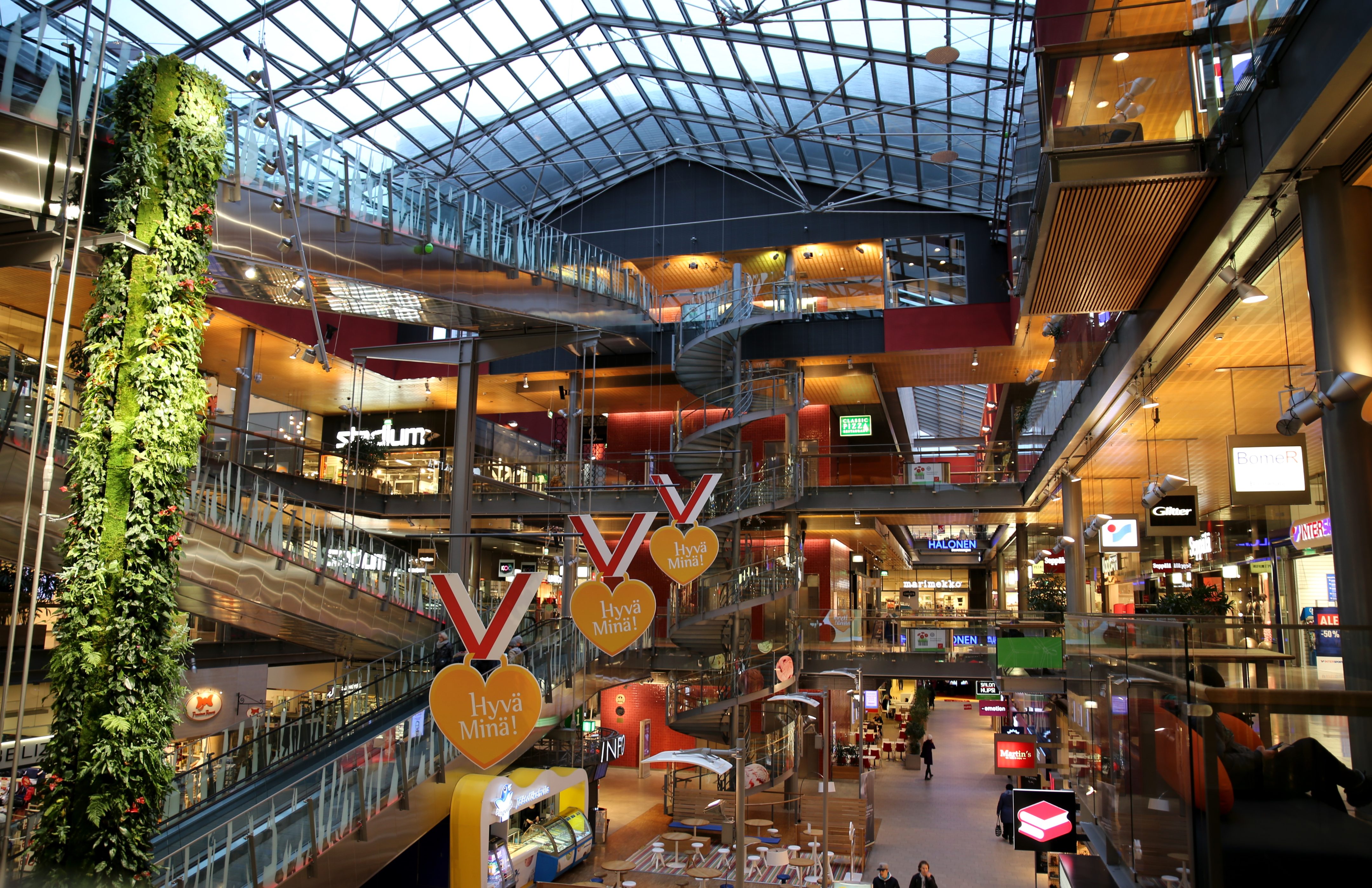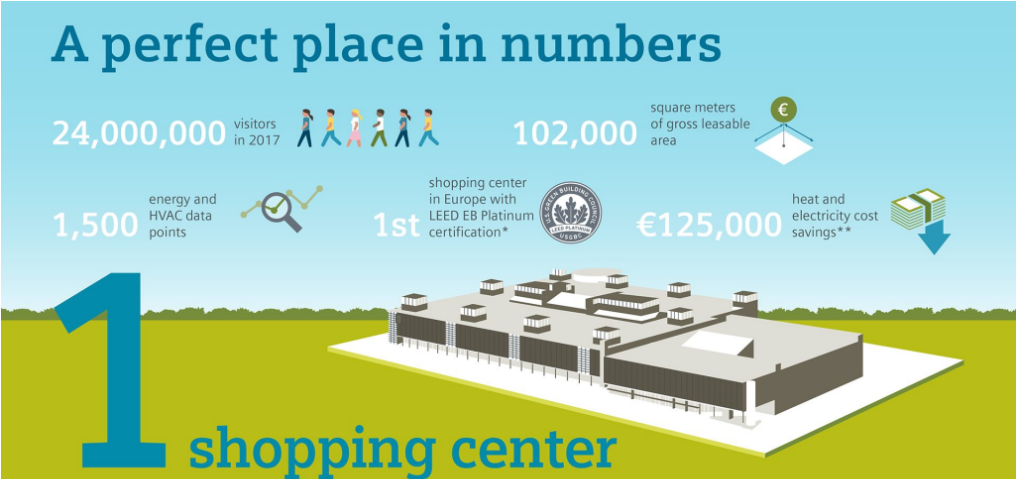
This building – it’s a place to learn. It’s a place to compete. A place to practise, to improve. To invent. But above all, this building is a community.
-Marianne Harjula, Sello Event Manager
Improve buildings and you improve people’s lives
More and more of human activity takes place indoors. Nowhere more so than in Finland, where long winters mean people look for warm and welcoming public places to come together. The people at Sello shopping center describe it not just as a mall, but as a community. And data-driven services from Siemens help to create the feeling of warmth, welcome and comfort: the conditions where community can thrive.
[one-half-first]
Sustainability means sustainable success for Sello shopping center
Sello was the first shopping center in Europe to become LEED EB Gold-certified in 2010. It was also the first shopping center – and one of only nine such buildings in Europe – to achieve the LEED EB Platinum certification in 2015. Sello aims to remain the greenest shopping center in Europe, providing its over 170 tenants with a sustainable business environment.
[/one-half-first]
[one-half]
Feeling comfortable with good air quality
The shopping center needed to be modernized and its efficiency improved to secure ongoing LEED certification. This was critical to shop tenant retention, who expect fair and consistent rents and low operating costs. This was equally important from a marketing perspective: Air quality is key for the overall quality of the shopping environment offered to the public, because visitors want to feel comfortable. [/one-half]

Optimal improvement in energy consumption and air quality
Leveraging data from energy efficiency and HVAC systems, air quality and temperature sensors, occupancy rates and weather data, Siemens identified areas for improvement and delivered a comprehensive optimization program for Sello’s building systems that’s focused on energy consumption and air quality.
Perfect services with the Digital Service Center and Navigator
The analytics approach included space- and equipment-level trending analysis, a customized set of parameters for equipment performance and environmental conditions, as well as fault detection and diagnostics to ensure that issues are handled quickly and quantifiably. The services were delivered both on site by a dedicated Siemens energy manager and building automation maintenance staff right on site and remotely through a connection to the Digital Service Center and Navigator – the cloud-based energy and sustainability platform.
This case study was submitted by Siemens. To see the full article, please visit the Siemens website.


